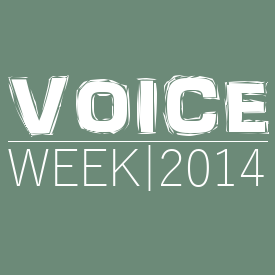September 22 – 26
Yes, friends, the time has come for the fourth annual, astounding, splendiferous, phantasmagorical, pen-bending event known as Voice Week.
Voice Week is a five day blogging challenge wherein average, ordinary citizens of the writing world push their literary abilities to the very limits of sanity–and possibly much further.
We will step outside our own matter-bound heads and into the mysterious, sensational, never-fully-explored minds of characters we have created. And, with luck, we will write in ways we have never written before.
We will write in their voices.
The rules are simple. Write five versions of the same flash story with identical facts but different voices. Make them each about 100 words long. Post one a day, Monday through Friday, September 22 – 26.
It’s not just about five different characters. It’s about five different tones. Five different thought patterns, and five different ways to express the same thing. Maybe your voices are different ages, or from different time periods, or different species.
Whomever they are, your mission is to make them sound different.
In experimenting with different voices, we hope to better understand our characters and to further develop our own unique voices. Voices that will make people recognize our work the way they recognize Dickens or Hemingway.
It’s not a competition; it’s a learning opportunity. And between now and September 22, I’ll point you to different tools that will help you understand what voice is and how to use it.
You can find all the details, including prompts, at Voice Week Headquarters.
I would so love for you to join the fun. Comment below or anywhere over there to get your name on the official Voice Writers list!
–







